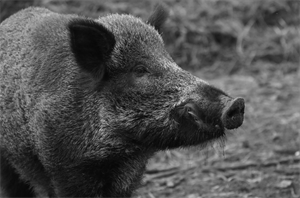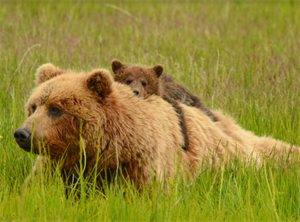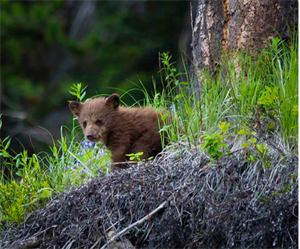
PUMPA - SMART LEARNING
எங்கள் ஆசிரியர்களுடன் 1-ஆன்-1 ஆலோசனை நேரத்தைப் பெறுங்கள். டாப்பர் ஆவதற்கு நாங்கள் பயிற்சி அளிப்போம்
Book Free Demo I WILL begin with Bruno, my wife’s pet sloth bear. I got him for her by accident. Two years ago we were passing through the sugarcane fields near Mysore. People were driving away the wild pigs from the fields by shooting at them. Some were shot and some escaped. We thought that everything was over when suddenly a black sloth bear came out panting in the hot sun.
Now I will not shoot a sloth bear wantonly but, unfortunately for the poor beast, one of my companions did not feel that way about it, and promptly shot the bear on the spot.
As we watched the fallen animal we were surprised to see that the black fur on its back moved and left the prostrate body. Then we saw it was a baby bear that had been riding on its mother’s back when the sudden shot had killed her. The little creature ran around its prostrate parent making a pitiful noise.
I ran up to it to attempt a capture. It scooted into the sugarcane field. Following it with my companions, I was at last able to grab it by the scruff of its neck while it snapped and tried to scratch me with its long, hooked claws.
We put it in one of the gunny-bags we had brought and when I got back to Bangalore I duly presented it to my wife. She was delighted! She at once put a coloured ribbon around its neck, and after discovering the cub was a ‘boy’ she christened it Bruno.
Explanation:
The narrator begins by explaining to the readers that the text is going to deal with his wife's pet sloth bear. He recounts the day of the incident when he first met the pet bear. He creates an air of suspense as he says that he got the bear by accident. The story then moves on to open a flashback episode, that picturizes a sugarcane field in Mysore. Generally, fields and farmland are attacked by wild boars, pigs and elephants from the neighbouring jungles. Similarly, the narrator encounters a group of people driving away wild pigs that had come to attack and feed on the sugarcanes. Wild pigs or wild boars can be a huge threat to farmlands as they trample and destroy the plantations and crops. They adopted a mean technique to drive them away. Since they were also scared of being attacked by the wild pigs, they chose to shoot them down. While people use solar lights and fencing in the modern age, there was not much of an alternative to keep the wild pigs away for farmers in the pre-Independence days. It was a time when hunting was legal in India and many men took it as a sport. Some pigs were shot and some escaped by running. When everything was settled with the pigs, the narrator notices a black sloth bear emerging from the field, panting under the hot sun. The bear must have hidden hearing the commotion, and when it resurfaced, it happened to be noticed by the people.

Wild pig
The narrator makes it clear to his readers that he would never shoot a bear on purpose. But his companions do not share his compassion and therefore shoots the poor beast. The companions could have shot the bear out of fear of being attacked or even for the sake of sport and fun. But a series of incidents unfold after the shot. The bear falls down lying facing downwards and has a small patch of black fur on its back. They were surprised to find the black fur moving from the dead bear's body. It was the cub of the bear who had clung on to its mother's body tightly during the time of the shooting. The bear had in fact tried to rescue its cub from the shooting. A pathetic scene enfolds as the cub, not being aware of what had happened, runs around his dead mother's body without a clue. He makes a pitiful noise when he runs, showing that he could sense that something was wrong. He is in a state of confusion amidst the chaos.

Bear cub clinging on the back of the bear
The narrator runs behind the cub in a hopeless attempt to catch it. In spite of the fact that the cub had to experience a series of torture, he is subjected to more by driving him around the field. In the narrator's perspective, he is trying to protect the cub by capturing it and giving proper care. But he does not realize that the cub's place belongs in the wild. He somehow manages to capture him along with his companions. He drives him in and around the sugarcane field since the cub tries to escape. He holds it by the back of his neck along with his collar. The bear in spite of being a cub, does its best to snap out of his hands. His inborn nature is brought out when faced with a difficult situation. He tries to scratch the narrator's hands with his hooked claws to try and escape. He was put in a gunny-bag, and taken to his home back in Bangalore. The cub was gifted to his wife, who was delighted to have a bear for a pet. The process of taming the bear starts from this moment as a red ribbon is tied around his neck and he is christened with a name 'Bruno'.

A bear cub in the field
Meanings of difficult words:
| SI.no | Words | Meaning |
1 | Sloth bear | A bear species native to India; feeds on fruits ants and termites |
2 | Panting | Breathing quickly especially after running or exercising |
3 | Wantontly | For no good reason |
4 | Companions | Friends; People who accompany a person |
5 | Promptly | Quickly |
6 | Prostrate | lying on the ground facing downwards |
7 | Pitiful | In a sorry or bad state |
8 | Scooting | To rush quickly; To slide in a sitting position |
9 | Scruff of the neck | The back and collar of the neck |
10 | Snapped | To move in a particular position |
11 | Claws | Curved nails at the end of a an animals feet or beak |
12 | Gunny-bag | A sack made of jute or natural fibers |
13 | Delighted | Very happy |
14 | Christened | To give someone a name in a Christian ceremony |
15 | Trample | To walk on someone and hurt or destroy |
16 | Commotion | Great noise |
17 | Resurface | Come back from hiding |
18 | Pathetic | Causing pity or sympathy |
19 | Chaos | A state of confusion |
20 | Perspective | The way one sees or approaches something |
Reference:
National Council of Educational Research and Training (2006). Beehive. The Bond of Love - Kenneth Anderson (pp. -113-118). Published at the Publication Division by the Secretary, National Council of Educational Research and Training, Sri Aurobindo Marg, New Delhi.